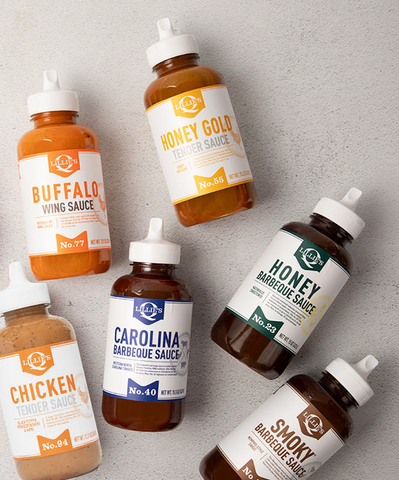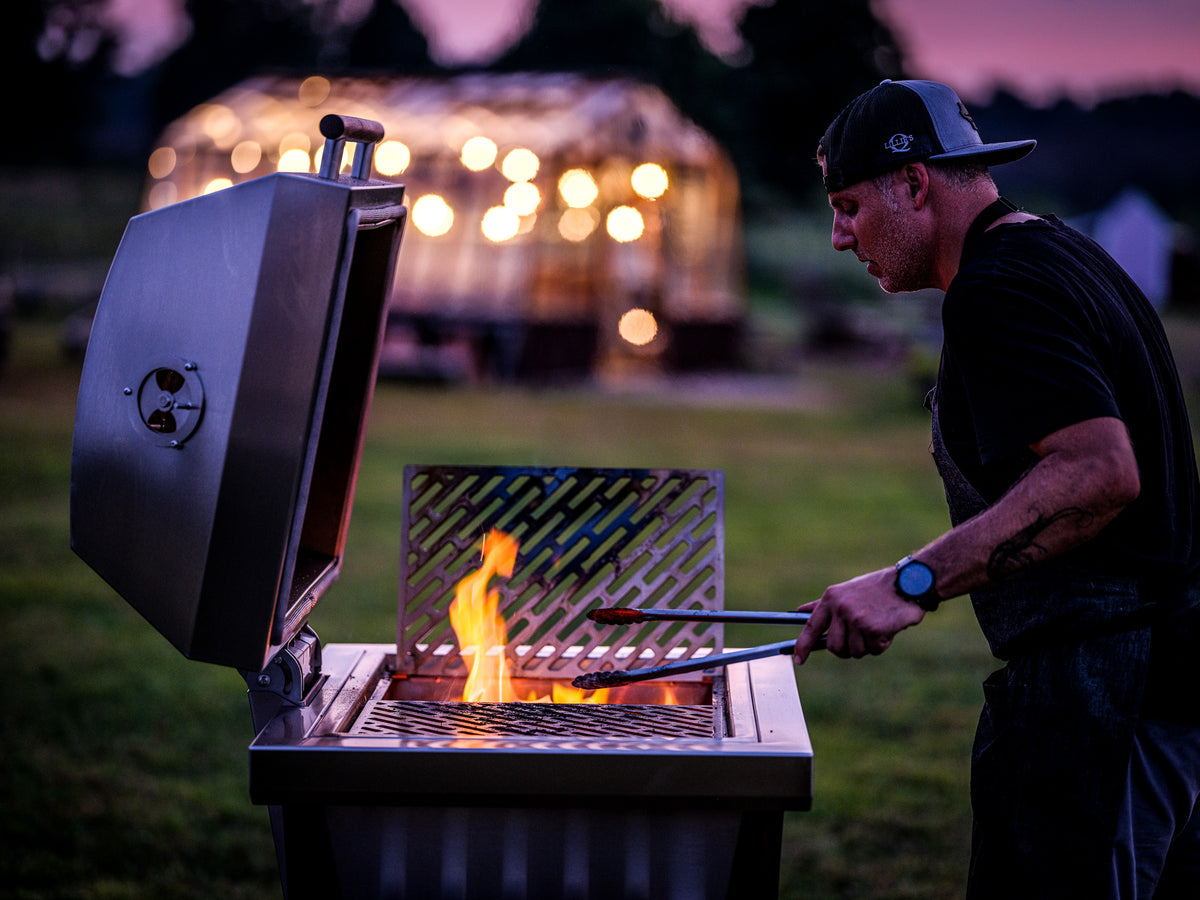The crackle of a blazing fire, the tantalizing aroma of meats slowly absorbing that smoky goodness, and the unmistakable charm of a summer barbecue — there's little that can rival the joys of grilling or smoking food in your backyard. However, like all good things, the art of BBQ comes with its challenges, and at the heart of these is fire management. Mastering the dance of flames isn't just about achieving that perfect sear on your steak or ensuring your ribs are fall-off-the-bone tender; it's also about ensuring the safety of your home and loved ones. In this post, we'll delve deep into the techniques and tips that will not only make you a BBQ maestro but also a champion of safe grilling and smoking practices. So, whether you're a weekend grill enthusiast or an aspiring pitmaster, read on to ensure your fire skills are both impressive and impeccable.
Grill Zones 101: Creating and Managing Heat Zones in Your Grill
The Art of Heat Zonation
Mastering the art of grilling requires more than just flipping burgers; it's about understanding the dynamics of heat and how it interacts with your chosen fuel. Setting up distinct heat zones in your grill is crucial. A direct heat zone provides intense heat, perfect for achieving that crispy sear on steaks or quick-cooking veggies. In contrast, an indirect heat zone offers a gentler, radiant heat, suitable for slow-cooking larger cuts without charring them. This method ensures every item on the grill cooks at its optimal pace. However, the effectiveness of these zones can be influenced by the fuel you choose. Different fuels have varying pros and cons concerning flavor, temperature control, and burn time, which can impact the efficiency of your heat zones.
Tailoring Your Fuel for Perfect Zones
When it comes to picking a fuel, hardwood, for instance, imparts a rich smoky flavor but might offer less control over consistent temperatures. Charcoal, on the other hand, often provides a steady burn time and more predictable temperature zones but might not pack the same flavor punch as some hardwoods. Briquettes, specifically designed for uniformity, might serve best for clear demarcations of direct and indirect zones. However, their flavor might be deemed subtler compared to natural woods. Balancing these pros and cons for each fuel type concerning flavor, temperature control, and burn time is essential. By tailoring your fuel choice to the food you're cooking and the zones you're aiming to create, you can ensure a flavorful and perfectly cooked BBQ spread every time.
Thermometers & BBQ: The Tools You Need for Accurate Temperature Monitoring
The Crucial Role of Accurate Monitoring
Recognizing the importance of a consistent temperature is at the heart of mastering the BBQ craft. Whether it's the fire's heat or the internal temperature of the meat, precise readings can make the difference between a good meal and a great one. Grill thermometers are an indispensable tool in this respect. They provide real-time feedback on the heat levels inside your grill or smoker, ensuring you're not cooking too hot or too cool. Inconsistent temperatures can lead to uneven cooking, risking either undercooked centers or overcooked exteriors. Investing in a high-quality grill thermometer can help you maintain the perfect environment for whatever you're cooking.
Delving Deeper with Meat Probes
While grill thermometers gauge the ambient temperature, meat probes delve deeper, quite literally. They measure the internal temperature of the meats you're grilling or smoking, ensuring each cut reaches its optimal doneness level. A perfectly smoked brisket or a grilled chicken breast can easily go from juicy to dry if not monitored accurately. Meat probes offer a level of precision that can be a game-changer, especially for cuts that require longer cooking times or have specific safe consumption temperatures. Here at Lillie's Q we like to use the Thermapen One by Thermoworks. By coupling the overarching insight from grill thermometers with the pinpoint accuracy of meat probes, BBQ enthusiasts can confidently navigate the nuances of heat, ensuring a consistent and delectable outcome every time.
Taming the Beast: Strategies for Maintaining a Consistent Temperature in Your Smoker
The Pillars of Precision: Recognizing the Importance of a Consistent Temperature
The allure of smoking lies in the slow transformation of meat, where hours of gentle heat meld flavors to perfection. Recognizing the importance of a consistent temperature is paramount in this transformative process. A smoker that fluctuates wildly in temperature can lead to unevenly cooked meats, with sections that are dry, tough, or, in worst cases, undercooked. Consistency ensures that the magic of smoking—the tenderizing, the flavor infusion—happens uniformly, giving you results that are predictably delectable every time.
Tactical Adjustments: Techniques for Adjusting Temperature
Mastering your smoker's temperament requires a combination of observation and action. Techniques for adjusting temperature range from the straightforward to the nuanced. Adding or reducing fuel is the most direct approach. If the temperature dips too low, adding hardwood or charcoal can boost it. Conversely, if things are getting too hot, reducing the amount of fuel or spreading it out can lower the temperature. Moreover, managing the airflow by adjusting vents can either stoke the fire with more oxygen or tame its intensity. These techniques, when used judiciously, can keep your smoker humming along at just the right heat level.
Incorporating Additional Elements: The Role of Water Pans
Positioning of water pans inside your smoker can play a crucial role in maintaining temperature stability. A water pan acts as a heat sink, absorbing and radiating heat. This not only adds moisture to the smoking environment, which benefits certain cuts of meat, but it also helps mitigate temperature spikes. As the water heats up, it releases steam, which can temper sharp rises in temperature, ensuring a more steady cooking environment. In essence, a water pan can be your secret weapon in the battle against fluctuating temperatures, complementing your other techniques and ensuring a consistently delightful smoking session.
Hardwood vs. Charcoal: Choosing the Right Fuel for Your BBQ

The Time-Tested Tradition: Hardwood
When it comes to smoking, hardwood has been the go-to choice for generations, a favorite among purists who believe in the authenticity of its flavors. Hardwood, such as oak, hickory, or applewood, imparts a distinct, often species-specific flavor to the meat, making it integral for those chasing a particular smoky profile. As per expert advice for perfect BBQ smoking, selecting the right type of hardwood for the specific meat you're smoking can make all the difference. However, hardwood can sometimes be harder to regulate in terms of temperature, necessitating vigilance and experience for the best results.
The Versatile Contender: Charcoal
Charcoal, especially when shaped into briquettes, offers consistency that many BBQ enthusiasts value. It burns evenly, making it easier for those who are newer to the world of grilling to maintain a steady temperature. When it comes to best practices for grilling and smoking, charcoal offers a simpler learning curve. While it might not infuse the meat with as nuanced a flavor profile as hardwood, high-quality charcoal, such as Jealous Devil, can still give you that beloved smoky essence. Plus, for those who want a blend of both worlds, combining charcoal with wood chips might be the golden ticket.
Making the Informed Choice
Choosing between hardwood and charcoal boils down to personal preference, the equipment you're using, and the flavor profile you're aiming for. For some, nothing can replace the aromatic infusion of applewood on a tender pork shoulder, while others might prefer the controlled and consistent heat of charcoal for their weekend BBQ ribs. It's always advisable to experiment with both, understand their intricacies, and consult expert advice for perfect BBQ smoking. After all, the journey to mastering the grill is as delightful as the destination.
A Cleaner Burn: How to Reduce Creosote Build-up in Your Smoker
Creosote, a dark and sticky substance, is a by-product of incomplete combustion and can be a pitmaster's nemesis. When allowed to accumulate in a smoker, it not only poses potential health risks but also adversely impacts the flavor of the meat, infusing it with a bitter, acrid taste. The significance of fire—heat, fuel, and oxygen—plays a crucial role in managing and preventing creosote build-up. An improperly managed fire, with inconsistent heat or insufficient oxygen, can lead to excessive smoke and creosote formation. By ensuring a balanced relationship between these three elements, one can promote complete combustion, reducing the chances of creosote formation. Regularly cleaning the smoker, using seasoned hardwoods, and maintaining optimal airflow are also key practices in ensuring a safer, more flavorful BBQ experience free from the pitfalls of creosote.
Ventilation Victory: Using Your Grill's Vents for Superior Fire Control
Grilling perfection often hinges on the invisible: airflow. Understanding and manipulating your grill's vents and dampers can be the difference between a roaring flame and a smoldering ember. For beginners, these vents may seem like minor features, but they play a pivotal role in controlling the temperature and ensuring even cooking. Manipulating vents and dampers allows grillers to regulate the amount of oxygen that reaches the fire. More oxygen can intensify the
flames, while less can mellow them out. By mastering this delicate dance of open and closed vents, even novice grill enthusiasts can achieve superior fire control, ensuring their BBQs are cooked to perfection every time.
Safety First: Preventing Flare-Ups and Managing Unexpected Fire Surges
Root Causes and Their Ramifications
Flare-ups are the unexpected fire surges that can momentarily turn a calm grilling session into a fiery spectacle, and understanding the causes of flare-ups is essential to preventing them. One primary cause is the dripping of fats and oils onto the heat source. While these drippings can enhance the smoky flavor of BBQ, they can also ignite when they come into contact with open flames. Proper fat trimming before placing meat on the grill is a preventative measure that can greatly reduce this risk. Another contributing factor is overcrowding the grill. By piling on too many pieces of meat or other foods, the chances of fats pooling and igniting increase, making it essential to space out what you're grilling.
Proactive Solutions for a Safe BBQ Experience
While being aware of the causes is vital, having practical solutions at the ready can make all the difference. Using drip pans is a straightforward yet effective method to catch those errant drips of fat and juices, preventing them from reaching the flames below. Positioned directly under the meat, these pans not only collect drippings but also help in reducing the chances of flare-ups. Additionally, maintaining a clean grill can mitigate risks. Residue from previous BBQ sessions can ignite when reheated, so regular cleaning can ensure a safer environment. Armed with knowledge and these practical tips, grill enthusiasts can confidently manage and prevent flare-ups, ensuring a safe and enjoyable BBQ experience every time.
Conclusion
The journey through mastering your own barbecue at home, underscores a fundamental truth: mastering fire management is not just a pathway to mouth-watering BBQ results but also a cornerstone of safety in our culinary endeavors. When we harness the flame with skill and understanding, we unlock a world of flavor while ensuring our BBQ sessions are safe and enjoyable. As you take these insights to heart, we invite you to share your own experiences, tips, or stories on fire management. After all, the beauty of BBQing lies as much in the community and shared knowledge as it does in the sizzle and smoke.



